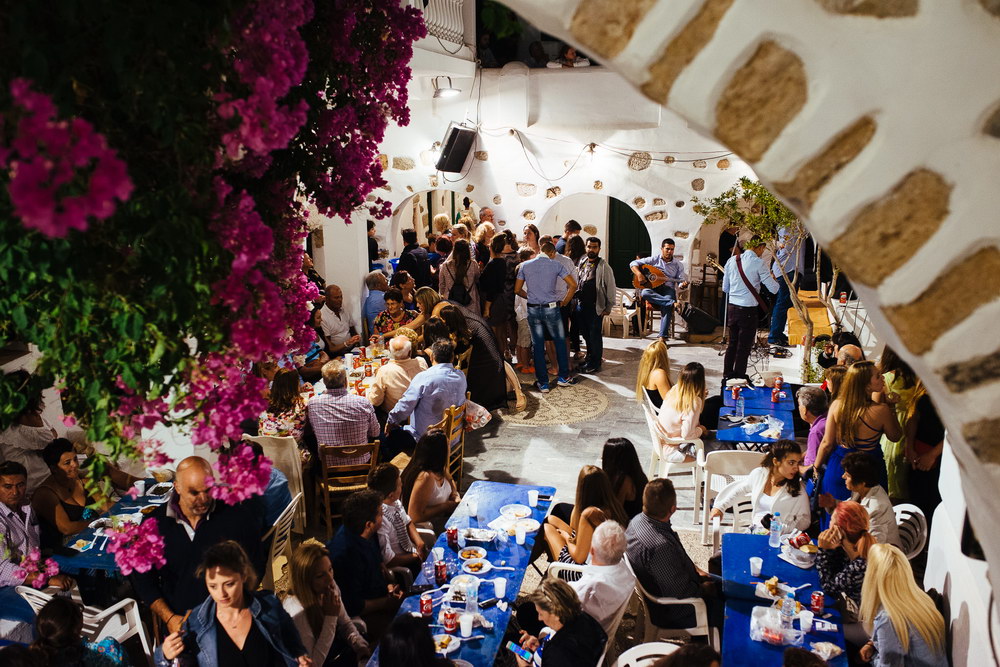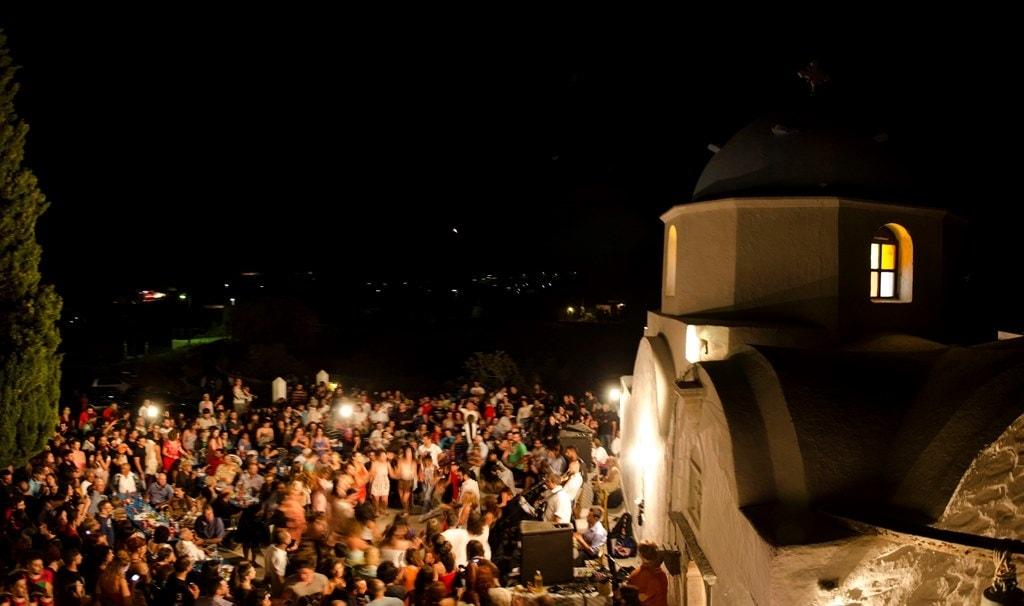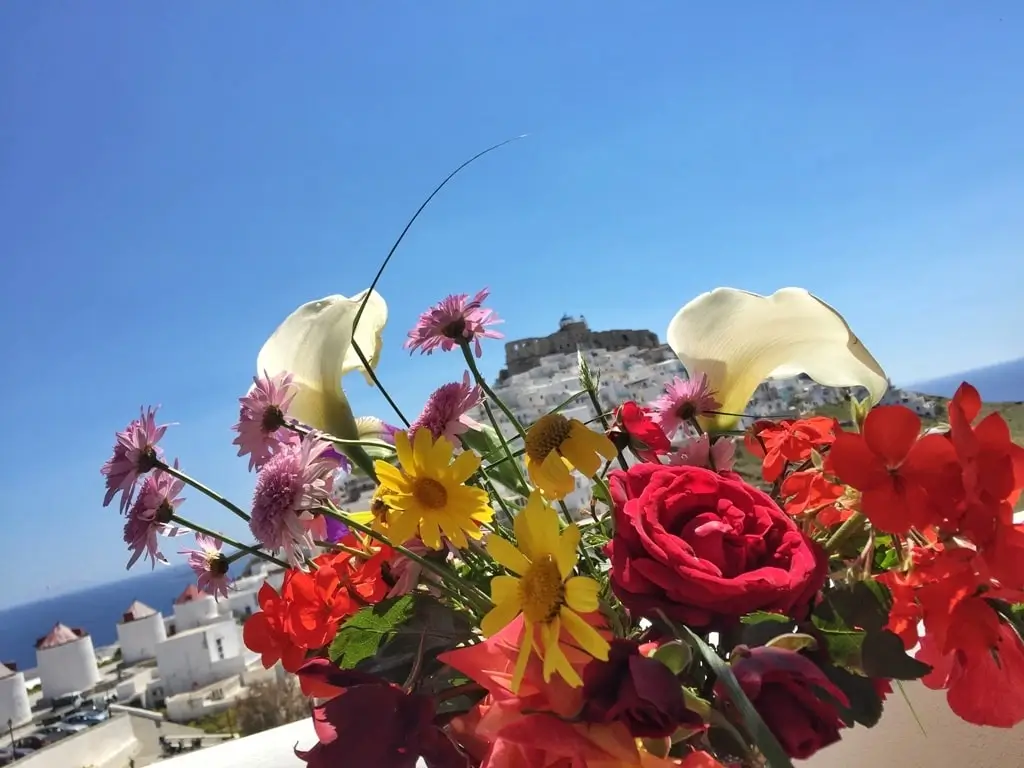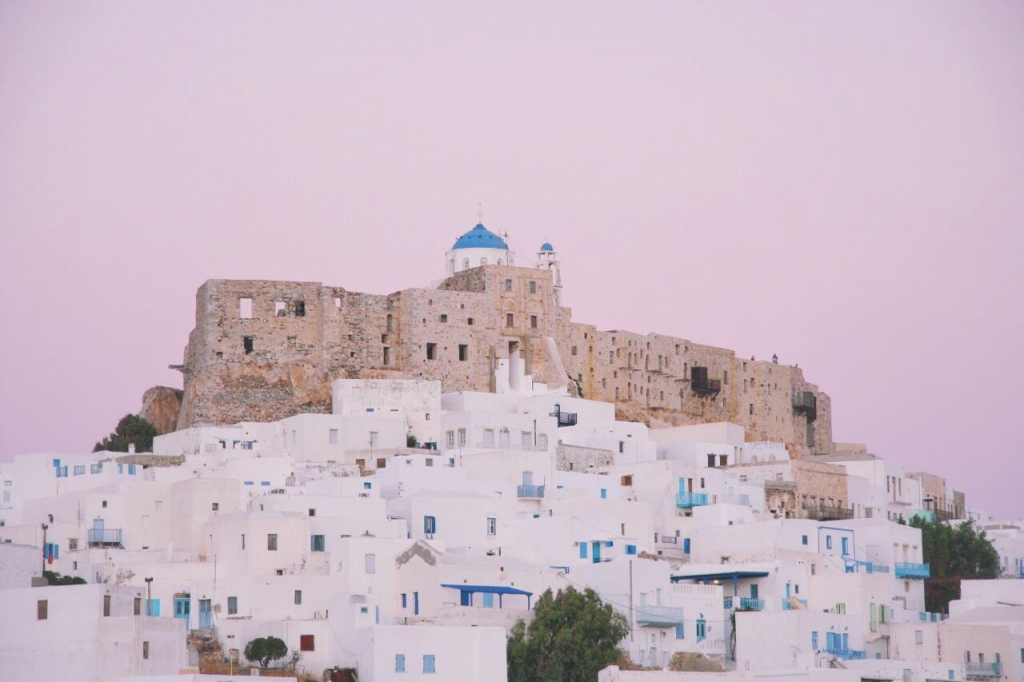The festive celebrations of religious anniversaries give the visitors of the island a great opportunity to witness the true identity of Astypalea.
Hospitable and openhearted by nature, Astypaleans, will instantly make you feel welcome and at home. Eager to share their joy, they won’t think twice before inviting you to join in the celebrations. They will happily talk to you about their homeland, which they absolutely adore, and treat you to local delicacies, ranging from “japrakia” or “dolmadakia” (i.e. vine leaves stuffed with rice), locally produced cheese, “pouggia” (cheese rolls particular to the Astypalean cuisine) and various sweets, to more intricate dishes like the exquisite “lambrianos” (i.e. baked lamb or goat stuffed with liver, rice and spices). It goes without saying that wine flows freely at all such occasions, the music of the violins and the lutes creating an atmosphere of nostalgic euphoria, immersing you either to a sweet inertia or enticing you to wildly dance.
In every fair, and before you even realize it, you'll find yourself mingle with the group of people around you and dance to traditional songs until, most likely, the early morning hours. And by that time, you will have picked up the Astyapalean 'sousta' steps, a rhythmic dance that's very popular in all fairs. You can always count on one of the locals to show you the steps if you’re unsure, but by the time the sun rises, you will have mastered them and will be able to lead the dance in the next fair - always, only a short while away.

That people feel the need to drop everything they’re doing in order to start dancing upon listening to the sound of the violin, brings in mind a flock of birds looking for water: once they have located a pond, they all touch down and start drinking it.
Summer fairs are quite special. They are the days of joyous celebration both for the locals and the visitors of the island. Not only do they combine religious rites with festivities but they allow the truly devout to ‘let go’ and enjoy themselves and the locals to celebrate in the company of friends and relatives who –despite having emigrated to other countries or places–always make sure to return to Astypalea during their summer holidays. All visitors of the island get to partake in this festive atmosphere, and this makes them feel like they truly belong here.
The most known –and worth attending –summer fairs in Astypalea, involve the ones in celebration of the Saints name days, particularly that of Profet Elija (19 Jul), Saint Panteleymon (26 Jul) and Saint John the Baptist (28 Aug) as well as the ones celebrating the Transfiguration of Jesus (5 Aug), the Dormition (14-16 Aug) and the Nativity of Mary (7 Sep).
The greatest of these fairs is the one dedicated to the Dormition of Mary. The festivities, which last for three days are held at “Rodja” –meaning “Pomegranate tree” –in the churchyard of “Panagia Portaitissa”, taking the name from the place where a pomegranate tree used to grow. Panagia Portaitissa, situated at the edge of the main village (Chora) of Astypalea, was founded by Saint Anthimos in 1762 and operated as a women’s convent for a long period of time. It is now considered the most important Orthodox place of worship on the island. There, in the churchyard of Panagia Portaitissa, is where the feast in celebration of the Dormition of Mary takes place on the eve of the holiday (14/8). Spirits are always high –to be precise, the merriment goes on well into the next morning, long after the sun has risen and revealed the breathtaking view of the Aegean Sea.
The festivities resume on the day of Dormition, right after the evening prayer; the local women treat the visitors of the island with delicacies to thank them for paying their respects to Her Grace, the “Mother of God”. The meal is accompanied by plenty of wine but what makes the fair stand out, is everyone’s good spirits.
Finally, the following day is reserved for “Koukania”—games that are traditionally organized in the context of religious festivities and involve races, swimming competitions, tug-of-war, egg-in-spoon relay races, sack races and, of course, the notorious “Grab the rooster” game. Find yourself a spot with a panoramic view and prepare to have a good laugh –often to the point of tears.
TIP
>> Make sure that you pay a visit to the Ecclesiastical Museum of Astypalea, which shelters a number of important exhibits –pictures as well as artefacts –like a picture of Jesus and a wood carved Epithaph, dating back to the 15th and the 17th century, respectively.
Attending an astypalean feast is a very rewarding experience. The festivities evoke the innocence of our childhood –like visiting one’s grandparents in the countryside during a school holiday or like the first time we stayed up all night. And nothing can beat that!





